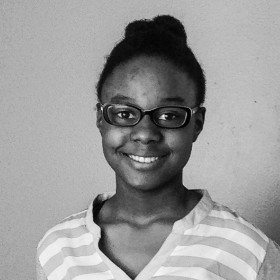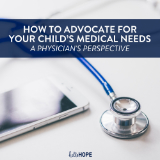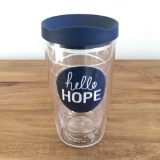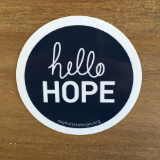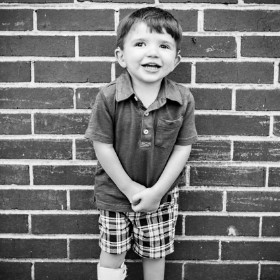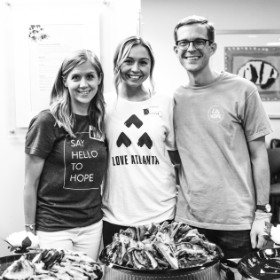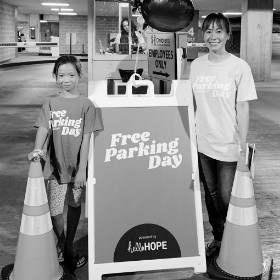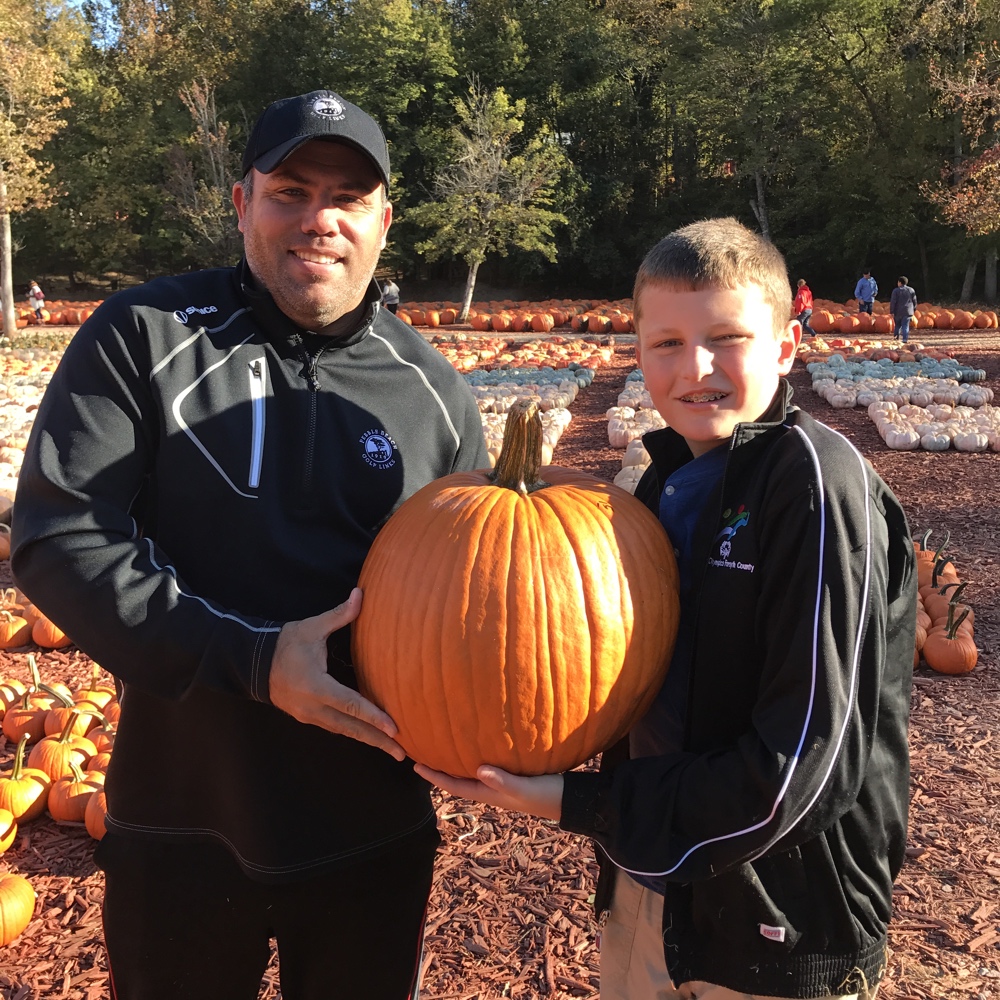Extensive Cortical Dysplasia: Nick’s Story of Hope
One of our greatest honors is telling the stories of families who are walking through challenges with hope. Chris and Chrissy are no exception. Their determination to seek and find the best in each other and their children inspires us, and we are so thrilled to introduce you to them today.
Extensive Cortical Dysplasia Discovered
Chrissy had a perfect pregnancy with Nick. His delivery, though a few weeks early, went smoothly, and she brought him home from the hospital with many of the hopes and dreams that new moms hold in their hearts. In the first few months of his life, though, Chrissy noticed that Nick was not hitting milestones commonly achieved by babies his age. In addition, he kept his right arm close to him and his thumb tucked. His pediatrician assured her that he was still so young and had most likely held his arm that way in the womb.
Still, though, Nick wasn’t starting to roll over, sit up, coo, or even respond much to his parents. At his six month check-up, the pediatrician took note and suggested the possibility of Nick having had a stroke in utero. He instructed Chrissy to take Nick to a pediatric neurologist. Chrissy was completely devastated.
She read all the information she could on perinatal strokes while they waited for Nick’s appointment with the neurologist. The neurologist ordered an MRI for Nick, who was eight months old at the time. When the ordeal of the MRI was over, Chrissy prepared to go home and wait a few days for the results. Much to her surprise, the neurologist came to the hospital immediately and brought her into a room to discuss the results.
He delivered the news that Nick had not experienced a stroke. Rather, he has extensive cortical dysplasia, meaning that his brain did not develop properly. The neurologist explained that while the right side of Nick’s brain has the typical scalloped shape, the left side looks like a clump with no rhyme or reason to the shape. He continued with this grave news: “Your son may or may not ever walk or talk. There might be significant learning disabilities. And someday he will start having seizures.”
Chrissy’s world was turned upside down. In that moment in the doctor’s office, though, her genuine thought was, “God gave me this child for a reason.” She remembered, “I grew up Catholic, and while I didn’t have a daily relationship with Christ at the time, my faith never left me. I was extremely driven and extremely type A. I would think, ‘This is my plan for me and my child. This is where we’ll be. This is where we’ll live.’ When that all went out the window, I’m grateful that my faith was so strong in that moment. I’ve had moments of asking, ‘Why me? Why my child?’ But, overall, I always knew in my heart that this was a purposeful choice, a purposeful match up of my son and I. That made it a lot easier from the beginning.”
Soon she and her husband also walked through a divorce, adding to the heartbreak. As Chrissy tried to make sense out of what was happening, she was determined to find a way to give Nick the care and opportunity he deserved. Over the next year and a half, Nick went to a variety of physical, occupational, and speech therapies to help him learn and develop. She remembers this time as a season of thankfulness as he began to roll over, sit up, commando crawl, and continue to defy the odds. Though he was still unable to say “Mommy” or clap his hands or even make consistent eye contact, Nick did show a lot of loving affection toward his mom, furthering their bond.
Facing a New Challenge
Chrissy poured her attention and dedication into researching activities that she and Nick could do throughout the day to help his brain develop, and his progress showed it. As Chrissy (and her then boyfriend Chris) watched Nick progress and began to raise their hopes and expectations, another setback reared its head in the middle of one night. Nick was rushed to the local children’s hospital with his first grand mal seizure.
The next year was spent trying to find a medication that would stop him from having continued complex partial seizures. When they were admitted for their second hospital stay, the medical team planned to fit Nick for a helmet for his safety. Soon after, though, they met with a new neurologist that recommended a medication for controlling the seizures — which worked!
For the last 12 years, Nick has been seizure quiet. This means that while he’s having seizures throughout the day on a daily basis, the medication is able to control the external manifestations. Knowing that this could change quickly, Chris and Chrissy still monitor Nick closely, but their gratitude for Nick’s progress is beautiful.Today, Chris and Chrissy are married, and they have two daughters, Brooklyn and Lana, in addition to Nick. Their family is marked by their love, leadership, and example of relentless grace.
Managing Daily Life
Nick faces a variety of diagnoses along with cortical dysplasia, including autism, anxiety, attention deficit hyperactivity disorder (ADHD), cerebral palsy (CP) on his right side, speech and social delays, and learning disabilities. But how do Chris and Chrissy characterize him? Nick is known as a handsome, gentle, and compassionate 14-year-old who loves his family and friends and is fiercely passionate about animals — a far cry from the prognosis the doctors gave after his first MRI.
Chrissy described how they approach daily life and help Nick expand his horizons: “I believe in showing him as much of the world and the world as much of him as possible.” They work hard to set Nick up for success while still looking for ways to nudge him outside of his comfort zone. They do an amazing job of giving and finding the support Nick needs while still stretching him and simply enjoying life together.
Chrissy added, “We’ve come so much further than so many people predicted. I guess they never wanted to set me up for failure, but at the same time, every time you can cross something off that list of things they told us we may never do, it’s huge.”
A big part of Nick’s development can also be credited with their support network with family, friends, school, and church. Their school system in particular has provided an incredible level of support. It’s clear that Nick is leaving his own mark as Chrissy describes, “Our community is so involved and so open and so compassionate and embracing. It really is amazing. I was scared to death of middle school for him, but there have been so many children who have embraced him. My tears of nervousness and anxiety became tears of joy last year when I saw how many kids were just so cool to him. His yearbook was filled with signatures. Everywhere we go, somebody says hello to Nick. I wonder if it hadn't been for him how aware I would be.”
Nick is also actively involved with their county’s Special Olympics program, where he can choose a different sport each season. The Special Olympics has provided a wonderful community for both Nick and his family. Chrissy explained, “That’s really my only special needs network for parents, and we are able to talk about everyday things we face. Little things that make us feel that we are a part of of the bigger special needs community. Everybody works together, even though our kids may have totally different diagnoses. We have that common ground of knowing we’re all there to support each other.”
And Nick truly does feel that support in each event he participates in. Chrissy continued, “He loves that affirmation that comes from other people being proud of him. Sometimes it comes across a little bit like, ‘Look at me! Look at me!’ But, he’s so used to everybody pointing out all of the accomplishments of his sisters. When he gets that chance to be in the spotlight, he gets so proud and excited and stands a little taller, and that’s really cool to see.”
Chris also talks about — like a truly proud dad — the amazing things that Nick is able to achieve, like making videos on their iPad or spouting out the latest animal facts that he’s learned. Chris works hard on finding the balance of calling out the best in Nick and holding him to a high standard, while being understanding of his limitations and the new season of puberty that they’re entering. His love for Nick is so apparent: “I recognize every day that his everyday is harder than my hardest day. It's humbling, but it also gives you energy to say, ‘I'm going to invest in this.’”
But there are also days that are overwhelmingly difficult. Through the many setbacks and challenges, Chrissy talked about how it’s tough watching Brooklyn and Lana begin to pass Nick in certain maturity and developmental milestones. She reflected, “Watching them go past him already, that's tough, and not knowing, someday when I'm gone, who's going to take my place. The future down the road is really hard for me to cope with, and then obviously watching everyone else in his life pass him by in certain ways. That's the hardest.”
Even in describing the tough days, though, Chris and Chrissy work to keep their outlook as positive as they can. Chris remembered when he met Chrissy, “She was completely broken hearted, but you had to dig deep to find that because that’s just not her style. It’s like she said. There was clearly a sense of purpose to both why she was living this life and then what she had to do.”
Chrissy shared, “Sometimes it's little things rather than big ones. It's not a short journey for us. It's every day, with little steps forward, and some steps backward. You just try to stay even keel, celebrate the little victories, and let the bad days go by a little more quickly.”
Chrissy shared about those little victories and the response that she has seen among her friends and family. “Whenever I share something about Nick, whether in person or on Facebook, it is met with such overwhelming love. That right there gives me hope, not just for us, but for our community, our society, and the people we surround ourselves with. In times like this, seeing him bring goodness out of other people is huge.”
Facets of Hope
As we talked with Chris and Chrissy, we loved the facets of hope they conveyed. Unpacking daily family life, they truly embodied a very real, transparent, and honest view of hope. When we first asked the question of what the meaning of hope is for them, Chrissy answered, “To be honest, just his smile. Just looking at him and knowing that, as simple as it sounds, God has a plan for him and I. That gives me such peace. I know it sounds so cliché to say, but it is his smile and seeing when he's so happy.”
Chris’s perspective on hope extended to God’s provision for Nick through Chrissy. Chris added, “I would say hope is the fact that God chose Chrissy to be Nick's mom. There is nobody more dedicated or intelligent to be Nicholas’s mom, and I found that out in the first weeks of knowing Chrissy. God is clearly providing for him, and that feels hopeful.”
We love the way that Chris and Chrissy truly support each other. They are each other's’ biggest fans. But it doesn’t stop there — this attitude has made it to their children as well. Even Brooklyn and Lana display hope by the way they interact with the people they meet. Their perspective on people — special needs or not — is clearly something that has come from their parents. Chris and Chrissy have taught their daughters to lead by example and to use their voices to encourage those around them to be compassionate toward those with special needs. I love how Chrissy sends Brooklyn and Lana off to school each morning: “Everyday when the girls leave for school, I tell them, ‘Have a great day. Go lead with a kind heart.’”
For parents with typical children, Chrissy’s encouragement is this: “You don’t have to do some major thing and coach a special needs team or volunteer somewhere. Special needs is not just autism or down syndrome. You don't have to know everything about it. Just embrace the child and say, ‘Hey! Do you want to come throw a ball around with me?’ It's just engaging them. Just treating people the same and teaching your children not to stare. It's always little things. There never have to be any major, uncomfortable steps. It takes very, very small acts of kindness, and those go a very long way.”
The Radostas have such an uplifting and inspiring approach to life. In fact, the way they shared about the tough days right along with the good days adds weight to the beautiful hope they carry.
Loading...



